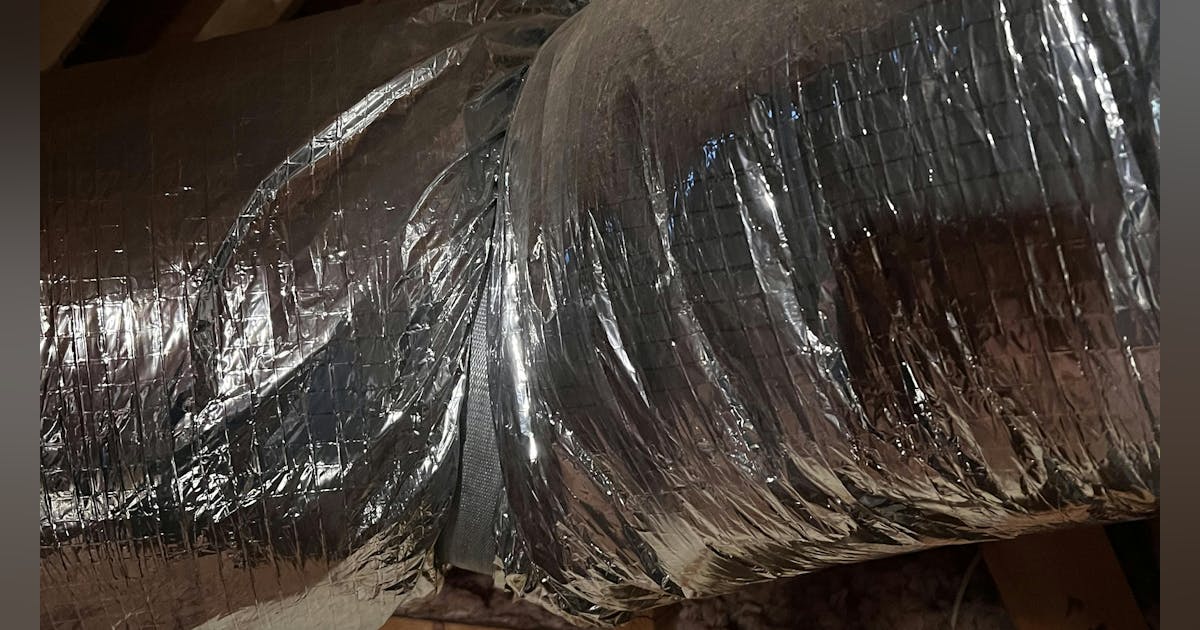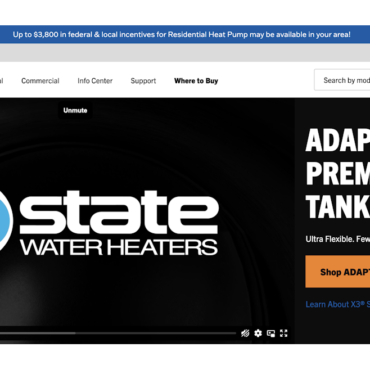These fittings have a large amount of pressure drop and lack direction for airflow as air attempts to leave the fitting. That air gets lost inside the plenum mainly because of momentum loss in the fitting. In other words, as air enters the plenum from the duct feeds, the fitting expands into a much larger space. Any air velocity drops there.
So, my suggestion is to avoid using these fittings. Instead, consider using extended plenum systems, lengthy transitions, or wyes. The cost to install these corrections will be slightly higher than the remote plenum, but the improvement in airflow performance will show up immediately.
5. Size Them Right
Finally, my fifth tip is to size those ducts correctly. You can follow the previous steps to the letter and still have a flexible duct system with poor performance if you size ducts using old-school rules of thumb. When you size flexible ducts using methods intended for sheet metal ducts, low airflow, and high static pressure will result.
These duct materials have two different interiors. Sheet metal has a smooth surface, while flex has an uneven helix core. This difference often results in different airflow rates between the two products.
Your systems will perform much better if you design using larger flexible ducts. Many like to use the .10 friction rate on a duct calculator and assume a six-inch duct delivers 100 cfm. If this is your expectation, the results will disappoint you.
However, if you must use a metal duct calculator and default value, size your ducts at the .05 friction rate and follow the installation guidelines above. Doing this gives you a greater chance of success and delivers systems that perform closer to intentions.
Trust but Verify
You can battle over duct design methods all day long, but until you take measurements and verify that the installation delivers the required airflow, it’s strictly a guess.
Measured airflow values from a balancing hood are where the rubber meets the road with any flexible duct installation. Using the tips above, you can show your installers the increased airflow from these improvements. Help them see how their attention to detail makes a difference.
Share these tips with your installers, and dare to install your duct systems correctly. Give your crews the flexibility to do the job right the first time. Your customers will appreciate it, and you will notice fewer callbacks.
David Richardson serves the HVAC industry as vice president of training for National Comfort Institute, Inc. (NCI). NCI specializes in training focusing on improving, measuring, and verifying HVAC and building performance.
If you’re an HVAC contractor or technician interested in improving your installations, contact David at ncilink.com/ContactMe. NCI’s website, www.nationalcomfortinstitute.com, is full of free information to help you improve your professionalism and strengthen your company.
Whether you require installation, repair, or maintenance, our technicians will assist you with top-quality service at any time of the day or night. Take comfort in knowing your indoor air quality is the best it can be with MOE heating & cooling services Ontario's solution for heating, air conditioning, and ventilation that’s cooler than the rest.
Contact us to schedule a visit. Our qualified team of technicians, are always ready to help you and guide you for heating and cooling issues. Weather you want to replace an old furnace or install a brand new air conditioner, we are here to help you. Our main office is at Kitchener but we can service most of Ontario's cities
Source link




Add Comment